#AdvancedMethods Journal Task
Explore tagged Tumblr posts
Photo



These are some of the finished results I achieved, these are very different to the portraits I usually create however I really enjoyed the process and like how they turned out. And looked into further research that portrays the style of this new work.
Straight Photography
Straight/ Pure photography- originating around the early 1900’s was a movement branching away from Pictorialism and inspired by Modernism recognising Photography as an art form which Paul Strand helped establish. Straight photography was about capturing formal aspects (line, shape, texture, geometric form), and a more creative approach to Photography. It was imagery that comprised of high contrast, sharp focus, no cropping and underlying geometric structures.
0 notes
Text
Week 8 - Seminar Review
On Wednesday 20th Me, Ozziline, Claudia and Lucrezia had our group presentation.
Since we had to discuss an artistic work through Art Theory and History Methods we decided to find something we all enjoyed and could discuss easily and smoothly. We opted for the discussion of Conceptual Art as a whole movement, considering three main characteristics of it: Anti-Aesthetic, Anti-Technicality and Anti-Establishment/Anti-Art.
Respectively we used as examples: One and Three Chairs by Joseph Kosuth,
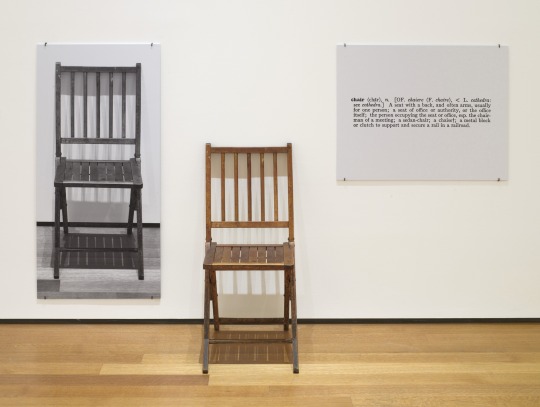
Self-Burial by Keith Arnatt,
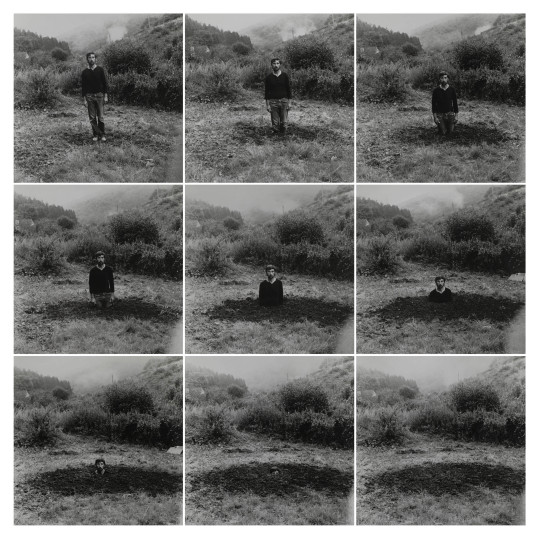
Commissioned Paintings by John Baldessari.

We met twice: the first time to decide the parts and the structure of the presentation and a second time to put together the power-point and finalize timings and consequentiality.
Since we had a very small amount of time to prepare something very detailed, we opted for a very simple power-point with just images and titles and decided to split the presentation into four parts: Start/Conclusion (Ozziline), Anti-Aesthetic (Lucrezia), Anti-Technical (Claudia) and Anti-Art (me).
The resulting presentation wasn’t, personally speaking, as smooth as I expected, probably for the lack of time we had to prepare it. We mostly ended up reading our notes, I tried my best not to, also because the subject I was discussing (Baldessari works and ideas) was something I covered already in a previous essay and I was quite confident in explaining.
Since Conceptual Art is so “untraditional” we also had a couple of questions and had to clarify some points, which led to a nice discussion with the others. The final result then was satisfying but could have been improved by a lot.
Perhaps due to the short time we had to talk, as well as to prepare the whole presentation, we couldn’t go into too much detail, which probably would have benefited the contextualization of each artist we discussed and would have contributed to the “depth” of the discussion.
Nevertheless, the idea behind our presentation came out quite clearly: Conceptual Art can be analyzed in comparison with more traditional forms of Art since it goes completely against all of them.
To describe the Anti-Aesthetic through the analysis of One and Three Chairs, we considered the fact that traditional ideas of Aesthetic included aspects typical of early paintings and sculptures (such as perfect proportions, colors, shapes, perspective ...), looking at this particular work you won’t find any of those. In fact, there is no kind of “traditional aesthetic�� value in this work, which for the definition of the Conceptual movement itself in which it identifies, is not about formalisms but purely about the idea behind the work itself.
Since this can be said to every aspect of the Movement, to make a complete and detailed presentation on the matter, we would have needed way more time and many more examples and in-depth analysis. Probably, for the kind of timeframe we were given, we should have chosen an argument that we could clearly synthesize in the time given, without leaving the audience with a “need to research further” in order to understand fully, which is what I feel happened.
#5IMAG016W AdvancedMethods Journal Task#conceptual art#seminars#john baldessari#joseph kosuth#keith arnatt
20 notes
·
View notes
Text
History as a field and Method of photographic research:
(week 5)
“all photographs are produced within a context. A photographer works with materials within a definite social place and time. These materials and choices the photographer exercise of them, whether conscious or not, organises the look of the picture”. (Bate, D, 2009, p.16) - This was my favourite piece of text/ quote that was spoken about in todays lecture. I like thought/ focus on the fact that all images have some sort of context behind them no matter what the subject and/or the reasoning is.
What is historical research?
= Historical research enables you to explore and explain the meanings, phases and characteristics of a phenomenon or process at a particular point of time in the past.
Historical research has the potential to completely change the mood of an image depending on what the image is of and what historical events were going on in the world at the time of the photo being taken, which could possibly effect the meaning and the purpose of said image.
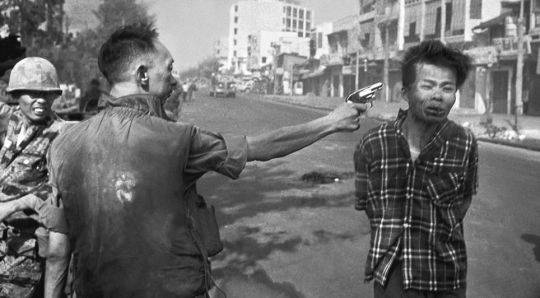
This famous image by Eddie Adams taken (1st February 1968) during the Vietnam War. The image shows the execution of a Viet Cong prisoner seconds before the gun is fired thus killing the man.
Now of course without any historical research the image still affects the viewer purely just by how horrific the situation within the photo actually is, since you are clearly able to see what is going to happen. However by revealing the information of the historical events behind the photo, it can now effect people in different ways. Depending on where you may live in the world and what their own situation and opinions are about the war itself.
1 note
·
View note
Text
Week 7 Student Engagement week/ Reading week
Personal Research materials/ deciding on essay research and reading materials, catching up with my reading list
I have really struggled with my essay choice. I wanted to focus on environmental changes as my photography project was based on the environment. But I was not focussed on the articles and the documentations and I felt I was unable to come up with enough material to express what I wanted to do. Surely, there was enough to go and material but I was not feeling it strongly. I decided to go for 3 artists and their exhibition catalogue.
- Choose an image (or a single case study, such as a book, with a number of images) and discuss it from the viewpoint of the ethics, aesthetics and/or ontology of photography.
- Critically discuss one art project (for example, body of work, a photobook, an exhibition) using either art history and/or art theory as your method.
My heart were in between the two. I did not focus on those because I thought they were easier, I strongly agree that they are, but simply because there was a lot to talk and write about it. More to put it my heart felt more strongly about the subject matter, this is not to say environmental was any less important. on the contrary, it is crucial. But I am leaving that to focus on my photography project and let images speak rather than my words.
This week I focussed a lot on Cindy Sherman’s work. I have always been obsessed with her work and how she presents it. Her images are strikingly creative and powerful.

This image is one of my favorites. Lighting, composition and the thought process went into it. The girl is wearing a gingham skirt suggests that she is a school girl or aged similarly, she has that shy/ growing up look on her face, then she has a scrambled paper in her hand, a love letter perhaps? She is lying on the floor but seems away from the world in deep thoughts. She has red flashes on her face and suggesting she is blushing of love?
-What is she thinking?
-What emotions have been possessing her to day dream like that?
-Is that a love letter? Has she written that or been given?
There are many theoretical questions may arise by this image.
Second images is about the women’s image a bit more feminist approach to it.

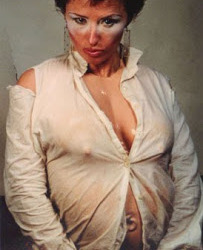

From top to the bottom those images have different meanings on their own to on each contexts. First image focuses on the women in the kitchen.
-Is that where women belongs? Is this is a protest against the oppression on women in those years, Postmodernism was the transformation from modernism. Image is so powerful and has a powerful message to deliver. Women has a well designed hair cut. She looks elegant and yet in the kitchen with an apron.
-Does that suggests that women can be many things rather than being labelled to be a housewife and her rights stripped off from them?
Image below that represents more and fashion and expression of how it transformed in different styles. Women in different roles?
Last but not least we have women in the library, suggesting this a ‘librarian’ But
- is it also suggesting that women are smart? Books can be also where they belong as well as the other parts of society settings?
- Could it be that women can multitask and work and be many other things?
Considering how Cindy Sherman approaches and presents her work, it is never fail to think she implies versatile meanings to her work. She has many messages to deliver to the viewer. Her images are mostly well thought and has implied meanings in every composition, colour, lighting and dress choices. She is intelligent and that intelligent speak more and more you look at her images. She implies the era and the cultural issues well in her images. Regardless of the feminist approach, she does touch the issues at hand during her time and her work. Message is loud and clear for those who want to see.
RENATE BERTLMANN
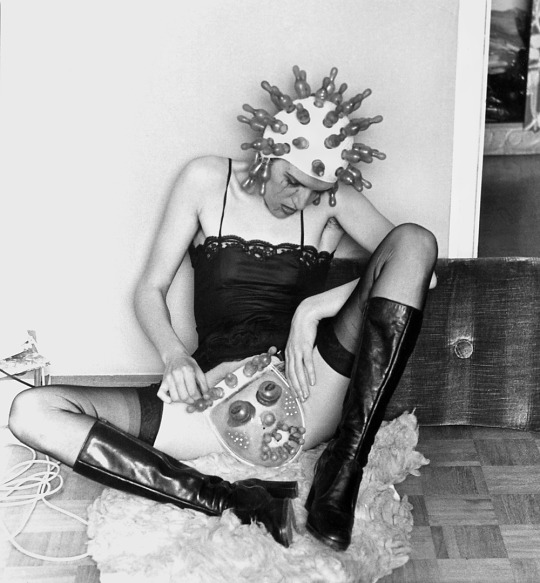
In Renate’s work, one of the images striked me as provocative was this one as it is the representation of a protest against the accepted conventional beauty. Beauty is very subjective and her work clearly screams of subjectivity and that beauty cannot be stereotyped and labelled as the accepted standards, desire to break free from the norms of conventional beauty.
BIRGIT JURGENSSEN

Bodenschrubben, 1975.
Here is the artist, Brigit is significantly addressing the domesticity of three different women in place. Women’s domestic labor, in her work there is a representation and the sense of her time and the style appointed in those era. It is silent protest against how the women were perceived in those years, in kitchen, cleaning, cooking, free laboring and injustice directed at them. Among all the other things, Women’s job and responsibility of being a good house wife and raising children may have affected how they produced their work in those times.
1 note
·
View note
Text
Advanced research methods. Lecture 1
The introduction to this module was extremely helpful in understanding the key concepts of the module, the tasks this module involves and the potential routes I may take when writing my essay. What I found most interesting is the detail you can get into when analysing with multiple methodologies. For example you may start out with a broad scope such as political theory, and then delve in deeper using a more precise theory. Alongside theoretical methodology is historical analysis, as explained to us can be used as a separate method or in unison with theoretical methods.
When thinking about an essay for this module I would like to use my prior knowledge in Historical theories and social theories to analyse a piece of work. One idea is to analyse historical issues or social issues using methodologies that stem from history theory. A photographer that I would like to do some research into is Don Mcullen and his work in Vietnam. As a piece of history it is very interesting how the wars coverage changed the worlds view on the fighting. However further research is needed on this topic.
I aim to use many forms of media to research this topic as the key will be to analyse don Mcullen’s work with a historical context. To do this I will have to understand the time period his work in Vietnam was made, by researching the time. My main aim will be to research the American culture at the time; however this war affected many other countries, so this will be taken into account. Apart from history methodology, I will look into using social, political and architectural theories as they all play a part in his work while helping me to analyse the time period.
1 note
·
View note
Text
Vilém Flusser - and his futuristic writing.

Vilém Flusser was born in Prague in 1920, he emigrated to Brazil and after 20 years later come back to Europe. He was an influential writer about many topics such a language, design, communication and photography. He died in 1991.
At the moment I’m reading his book Towards a Philosophy of Photography and I cannot stop thinking about his reflections about photography! Traditional images, technical images, windows, surfaces, apparatuses, machines, cameras, photographers, capitalism, production, human beings, world out there… Many topics is covered in his essays which I am interested to. I would like leave one recent citation from the book, which I consider as a worth text to look into photography and its philosophy in reflection to our actions on this Planet. It is a pity that Flusser died in 1991 just before the blossom of World Wide Web period and explosion of development in communication like the smartphones for instance.
“In short: Apparatuses are black boxes that simulate thinking in the sense of a combinatory game using number-like symbols; at the same time, they mechanize this thinking in such a way that, in future, human beings will become less and less competent to deal with it and have to rely more and more on apparatuses. Apparatuses are scientific black boxes that carry out this type of thinking better than human beings because they are better at playing (more quickly and with fewer errors) with number-like symbols. Even apparatuses that are not fully automated (those that need human beings as players and functionaries) play and function better than the human beings that operate them. This has to be starting point for any consideration of the act of photography” Vilém Flusser “Towards a Philosophy of Photography”
#journaltask#journal task#advanced methods#advancedmethods#furtherresearch#5imag016w#vilem flusser#apparatus#beyondtheframe#beyond the frame#philosophy#philosophy of photography#ontology
1 note
·
View note
Text
Advanced Research Methods entry 1
At first I found myself a little bit confused with the point of the lecture and the significance and purpose of methodologies themselves. That feeling quickly disappeared once we got into the practical/discussion aspect of the class though. Breaking own a multitude of images by method proved to be an effective method of demonstrating just why methods are important both in academic writing and as a part of a wholesome understanding of a piece of art. My group was "tasked" with discussing a fashion image off an unknown to me artist's photobook.(Edit: The photographer is Viviane Sassen; the image has been inserted for context and clarity.)
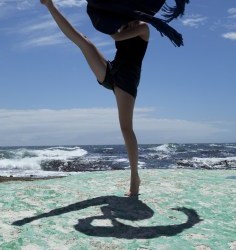
We started off slow but quickly picked up the pace, figuring out more and more ways to analyse the image from all sorts of different angles. We started looking at it purely photographically at first, breaking it down via artistic and photographic theory, referencing significant form, semiotics, the color palette, etc. We then dug a little deeper and started going through the different methodologies listed as examples in the powerpoint, just to see what we can get to fit and what we can't. Someone suggested exploring the image using gender theory, which I personally disagreed with as I didn't consider the sex of the subject to be of any significance to the content of the photograph we looked at.
As for why methodologies are important and I'd argue even somewhat necessary to academic writing, I find they provide a couple of very important things - they contextualise and validate our statements by directly referencing pre-established and renowned theories, effectively allowing us to make use and stand on the shoulders of very signifiant and often expansive research, without having to bother with referencing all of its intricacies (i.e. when breaking down an image using formalist analysis I don't need to go back and explain or prove why significant form is important to certain photographs). Another huge benefit at least for me is that methodologies are a great starting point for analysis - certain theories fit certain images better than others and when we constrain ourselves to using just one or two to dig into a piece of work I find it concentrates our efforts, allowing for a deeper and therefore more valuable understanding of a piece of work. Another benefit is providing a different and novel point of view, for instance, let’s take this image by Rachel Whiteread:
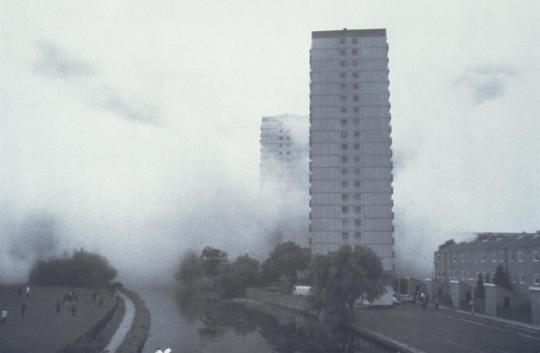
It could very well be an architecture shot or a street photograph, in which case we could employ methods better suited to its analysis as such. While that would undoubtably result in some deeper understanding of the image, it would also mean we completely miss the point of the project as a piece of documentary work, representing certain sociopolitical movements of the time as well as alluding to the artist’s own background and environment. The reason why I chose to reference this project in particular is actually a friend of mine that’s not particularly invested in art that I went to the Tate Modern with some time ago - she looked at these images and seemed really unimpressed, until reading the supporting statement on the wall - to me that’s a really practical demonstration of why methods are important - while they don’t offer a complete or rounded understanding of a piece of art, they do work well to point us in the right direction and make sure we as consumers are speaking the same language as the artist.
1 note
·
View note
Text
Exploring the Image
27.9.20
Learning about different methods that I can use to study and analyses photographs has shown me that by using some of them or the appropriate ones can help me to understand the photograph a whole lot more. By using a series of mythologies, it will help me to come to a conclusion in my research. Mythology is the systematic analysis of the methods applied to study. All photographs are produced with a context, photograph are now part of everyday life and photography creates an image that provides a record of an event, I then must make sense of it through a series of interpretations and investigations. I can use visual mythologies to interrupt and understand the images which then add another dimension by recognizing signs that the image is giving me. A photograph will only make sense if I can read it, by using a series of different mythologies I will be able interpret different layers of meaning by looking at it and taking account if different aspects of it. Depending on what the image is, will decide on what methods I think will be suitable for my needs. history could be a good way to start, by looking at the past it can help me understand the now. If the image is an old one, by understanding the history it could lead me into areas of discovery. Theory will make me think in new ways and semiotics will give me signs. However, meanings are not always fixed, and it is for me to work these things. I will first try to find out about the photographer, I will look at why the photograph was taken, how it was taken, what was its purpose, did it achieve its purpose, what were the thoughts behind its composition and construction. by looking at all of this in a methodical way it will help me to understand and come a conclusion as to what I think about the image.
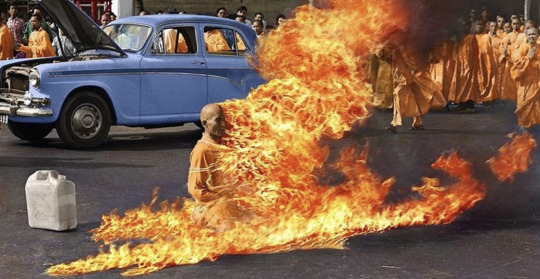
This image was taken in June 1963, of Vietnamese Mahayana Buddhist monk Thich Duc who burned himself to death to show that to fight all forms of oppression on equal terms, Buddhism needed its martyrs. The photograph was taken by Melcolm Brown of the Associated press. Reporters were informed the day before (10th June 1963) that something important was going to happen. Most reporters ignored the message as the Buddhist crisis had been on going. Browne turned up along with David Halberstam of the New York Times. 350 monks and nuns walked the streets defiieing the government by flying their flags, they were fired at killing 9 of the protesters. Duc got out of a car, with two other monks, one of them placed a cushion on the road and Duc sat on the cushion in the Buddhist meditative lotus position while his colleague poured the petrol from a five gallon can over him. Duc rotated a string of wooden prayer beads while reciting a homage to Buddha, he the struck a match and dropped it on himself. As the flames took hold a monk on a microphone repeated in English a Vietnamese ‘A Buddhist priest burns himself to death, A baddest priest becomes a martyr’. John.F. Kennedy said in reference to a photos he saw ‘No news has generated so much emotion around the world as that one.
0 notes
Text
Journal Week 10 - (27/11/19)
Advanced Research Methods - Seminar group presentation
Unfortunately, I was unwell for the presentation so I couldn’t attend, however having seen the final presentation and hearing feedback:
What went well?
The presentation was informative and communicated the idea of abstraction well, cohesively covering each topic and working well together throughout the process.
What needs to be improved?
Further research was needed, to confidently convey the idea of abstraction and to explain our idea in a theoretical analysis sense, instead of focusing on photo practice.
What was learnt from the process?
Presentation techniques and preparing/how to communicate your ideas to a group of people were learnt throughout the process.
How will this improve my work in the future?
Learning how to teach others about a subject they might have little/no knowledge on. It has also made me more confident to bring my own ideas forward, in order to benefit a group.
0 notes
Text
Week 6: Gallery Visit 2
Shot in Soho:
‘Shot in Soho is an original exhibition presented at The Photographers’ Gallery celebrating Soho’s diverse culture, community and creativity at a time when the area is facing radical transformation.’
It offers an opportunity to see the area through the lens of renowned photographers such as William Klein, Anders Petersen and Corinne Day.
The area of Soho is only one square mile and although it is surrounded by some of London’s richest and most commercial streets it has remained a place of diversity, acceptance and defiance. I feel the exhibition represents this very well using an interesting range of photographers that all present Soho and its people in different ways. But each just as interesting as the next. While each series or image may be portraying different people or places, they all come together to give the viewer a very truthful image of Soho and its sense of community for anyone and everyone who wishes to be a part of it.

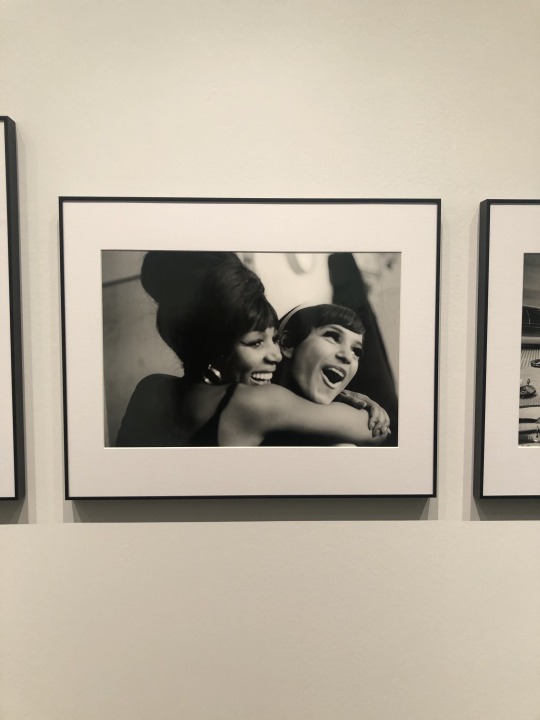

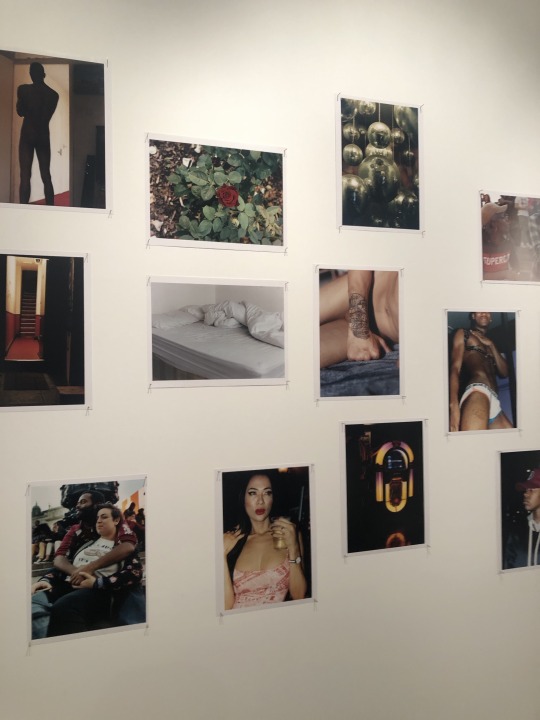


0 notes
Text
Advanced Research: Week 6 Gallery Visit 2
The Feast for the Eyes exhibit at the Photographers Gallery features photographs of food from across artistic and commercial practices. The Exhibit was divided into three sections; “Still Life, “Around the Table” and “Playing With Food.”
“photographs of food are rarely just about food. They reflect our lives and historical moment… Pictures of food - much like food itself - can raise deep questions around ideas of family, tradition, class, gender, race, health, pleasure and disgust”
A lot of this exhibition can be looked at through an art theory and history methodology.
“Still Life” explores the history of the genre and how it can be traced back to painting, as well as the progression. We can look at a lot of these photos in a historical methodology and theory and the relation to 19th century still life paintings.
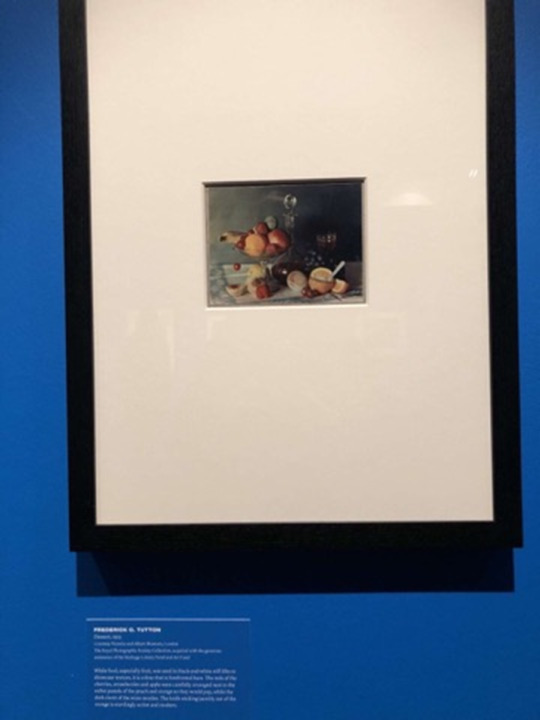
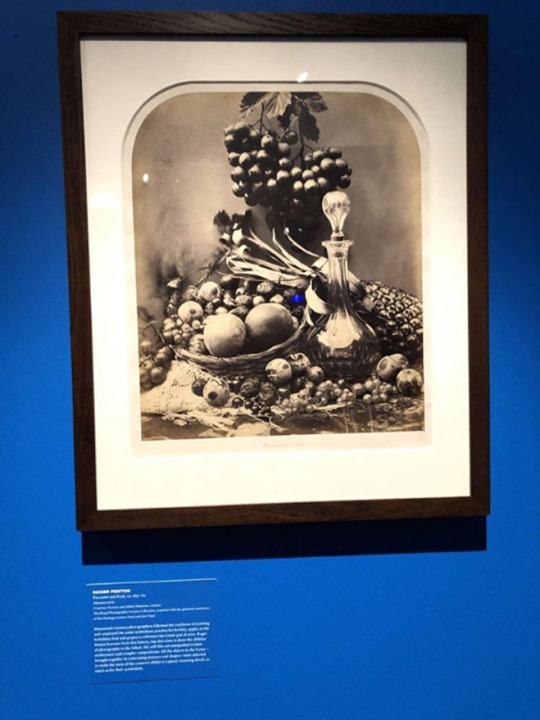
These two photographs bear striking resemblance to still life paintings, as well as this, photographers wanted to show the symbolism of the fruits, peaches for fertility, apples as the forbidden fruit etc. Roger Fenton wanted to portray this history but also aims to show the full potential of the camera. The fruit is composed to contrast the textures and shapes.
Fruit was often photographed to show the details and texture of the subject, however in Frederick G Tutton’s image, colour is the forefront of the image, composed so the soft colours are next to and contrasting the vibrant reds as well as the knife sticking out of the orange suggests modernism.
“Around the Table” is more so about the social and cultural history, showing how different communities deal with food

This photograph taken in the 1990’s taken by Anne Testut is one of many where her and her husband travelled Europe asking to take photos of people at dinnertime, as the concept of what constitutes Europe and Europeans shift drastically, eating dinner with your family seemingly don’t change. This would be looked at with a social and cultural history.
0 notes
Photo





When editing the images I used the curves tool, applied a black & white filter, adjusted the the Brightness/Contrast and then the Hue/Saturation.
0 notes
Text
Week 3 - ARM, Gallery visit
Today we have been taken for our first gallery visit at the Tate Modern to see Olafur Eliasson’s exhibition In Real Life.
After documenting myself and researching a bit about the artist and his work, I definitely engaged and understood more today than the first time I visited it, in July.
Olafur Eliasson is a Danish artist whose major interests concern elements (such as water, light, air) and space (and the relationship between everything that is in it). In Real Life shows both of these aspects and applies them to the more and more concerning environmental problem.
Using a mixture of different media (photography, lights, material objects...) he tries to sensibilise the audience in order for them to realise the problem through engaging and immersing themselves into his artworks.
The exhibition, mainly made of hypnotic installations, has many points that can be discussed and analyzed. Firstly, the big and important message that can be found behind every piece relates to the global environmental issue. Everything presented has something to do with the natural world and the way natural forces act around us. The ethic aspect comes up spontaneously. How far can technology and art installations go in order to not distract the audience from the real message? How differently could he portray this matter to make it more immediate (if there is a way)?
I don’t think his artworks are deceiving at all. In fact, I think they actually make you realise your relationship with space and the outside world in a way most people might never do naturally. Seeing water fountains and walking across a misty and humid corridor, for example, inevitably lead you to think about the nature of the elements you are sensorially witnessing. I think there’s no more immediate way of fully understanding something than experiencing it.
Eliasson has been criticized for one of his pieces he exposed last year in front of the Tate Modern and Bloomberg headquarters. He brought 30 ice blocks from the glaciers in Greenland and exposed them to melt in order to sensibilize towards global warming. Critics have accused him of contributing to the issue by willingly taking the ice from its natural environment. He defended himself saying Greenland loses 10,000 of those ice block daily, 30 more wouldn’t have made any difference there but possibly would have made a big impact in London way of thinking. Where does the right thing stand? Probably in the middle.
The last bit of the exhibition consists in a wall completely covered in words and images related to many pieces of research and theories Studio Olaf Eliasson has been investigating. It is full of inspiring starting points for different arguments and analysis.
Since my major interest is connected to our relation to space, I found the exhibition very much like something I would one day like to do. I think the best and easiest way of communicating through art HAS to involve engagement.
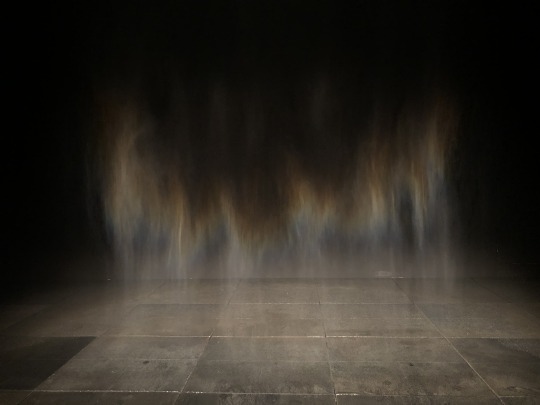
Olafur Eliasson - Beauty , 1993
Media: Spotlight, water, nozzles, wood, hose, pump
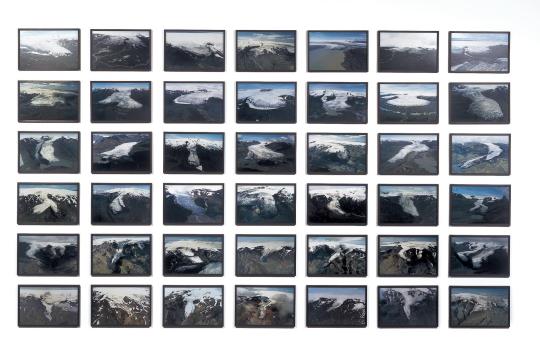
Olafur Eliasson - Glacier Series, 1999
Medium: Photography
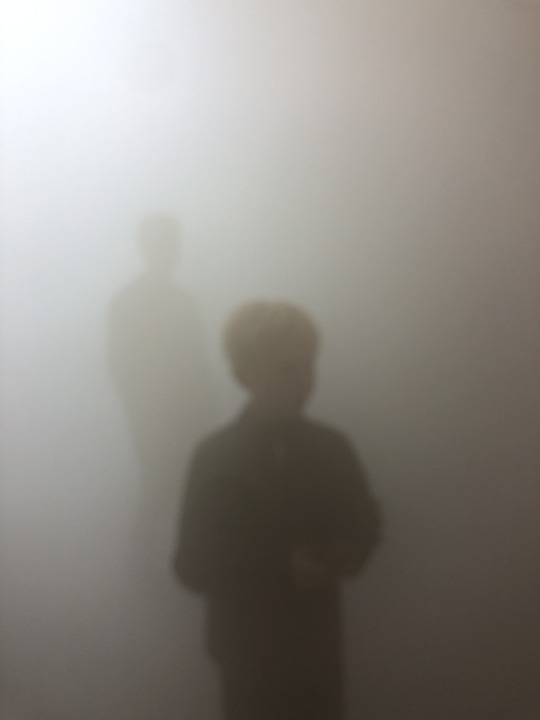
Olafur Eliasson - Din Blinde Passager (Your Blind Passenger)
Media: Fluorescent lamps, mono frequency lamps (yellow), fog machine, ventilator, wood, aluminium, steel, fabric, plastic sheet
#olafur eliasson#tate modern#advanced research methods#westminsteruniversity#reflection#5IMAG016W AdvancedMethods Journal Task
6 notes
·
View notes
Text
Art History and Theory as Method
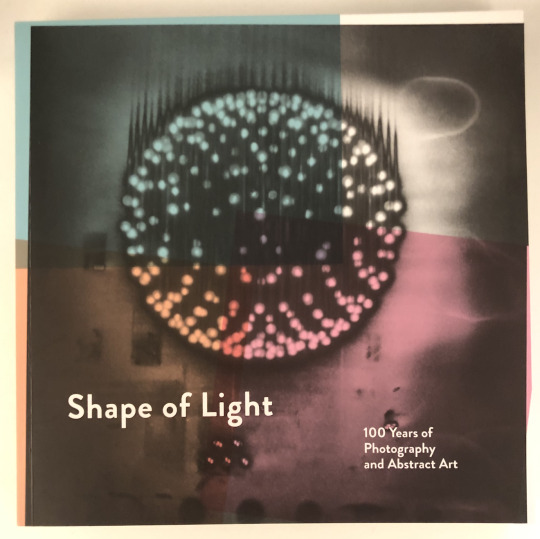
(week 4)
For todays lecture I had chosen to bring in my copy of the the Shape of Light catalogue, which I bought during our visit to the exhibition back in the first year of the course. - A catalogue is a list of the works included in an exhibition.
Discuss how you might use areas of the history and/or theory of art in analysing some appropriate images.
It is clear that art history and photography have a very close connection between one another.This is due to the fact that once photography really came into existence the two mediums would take inspiration from each other.
A great example of this would be looking at the artist, Juan Sanchez Cotan (born 1561) who had painted the well known piece, “Quince, Cabbage, Melon and Cucumber”. The painting shows these products within what looks to be a small cove in a wall acting as a shelf. Both the quince and the cabbage are being suspended in the air by two pieces of string, leaving the melon and the cucumber laying on the shelf. I think this is a perfect example for what I stated in my opening since many years later this image was actually recreated by an American photographer named Paulette Tavormina in 2010.
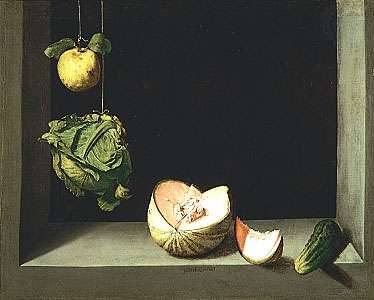
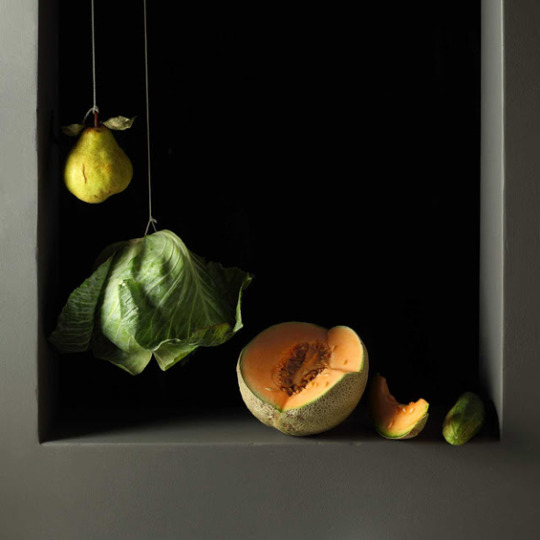
Even though that in my opinion Tavormina’s version is a lot less dramatic since I think it holds a lot less detail compared to the actual painting, but it still holds a certain charm to its slightly more minimalist style as it almost allows you to split the images into different sections, causing you to shift your focus from one object to another rather than giving you that wider scale of a painting which can sometimes force you to be stuck in the mind frame of it being one singular piece that is to be examined as a whole.
1 note
·
View note
Text
ARM - History as a method
History as a Field and Method of Photographic Research (TH)
History as a Field. As a field photography is normally divided into 4 different sectors; Individual practitioners, Periods in time, Style of photography and movements. The field of photography helps delve into the understanding of when, why and how the photograph was taken, looking into the morals and trying to understand why specific photographers shot in a specific way.
History as a method. Historically all photographs come with context behind the image, the specific time and place an image is taken, the style of photography and the medium used while taking the images.
All of the decisions above are actually performed consciously by the photographer whether he knows it or not. All historical parts that play into what makes an image acceptable or the meaning its trying to get across, through socially structures. Photojournalism is a large part of photography and commonly challenges against ethical problems throughout the subject.
0 notes
Text
Seminars - Presentation
Our groups seminar presentation revolved around the period of Conceptual Art and using Art Theory/History we analysed selected pieces of work. We brought each individual persons presentations together just before performing and I feel that the links between everyones chosen work weren’t strong enough for it be a coherent presentation. Although saying this, mine and Claras individual work followed the same trend of being from the peaking points of the Conceptual Art movement and we both explained how the work could be analysed in relation to the social and historical context that it was made in. To improve, our group should have divided into clearer sections of the movement to research and then joined together at the end or had set artist to research which we knew would relate and can be analysed effectively in relation to the mantra of the Conceptual Art Movement.
Performing the presentations helped me gain a greater understanding into the conceptual work produced int he 60′s/70′s as a whole and using the methodology of art theory meant reading into the collective consciousness of the movement and understanding key aims and objectives which were in the artists minds when creating the work. Discussion after with the class helped to solidify what I learnt in the process of making the presentation, being asked questions and needing to conjure answers challenged my knowledge and re-phrasing different parts also made it clearer to myself in the end.
My essay is based on work from a different art movement, however the skills gained in analysing work based on when it was made and how it fit into the art movement it was created in is really helpful when writing the essay for this module. Things I’ve learnt from other peoples seminars also has been really useful, seeing fresh examples of artwork and how they've analysed it. As well as seeing how other people in my class went about structuring their presentations and organised their groups was interesting seeing as that was where I feel our group really lacked.
0 notes